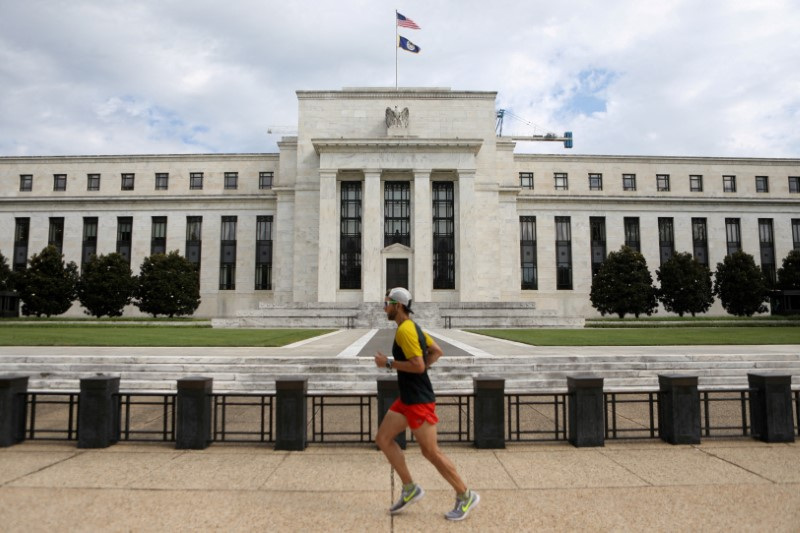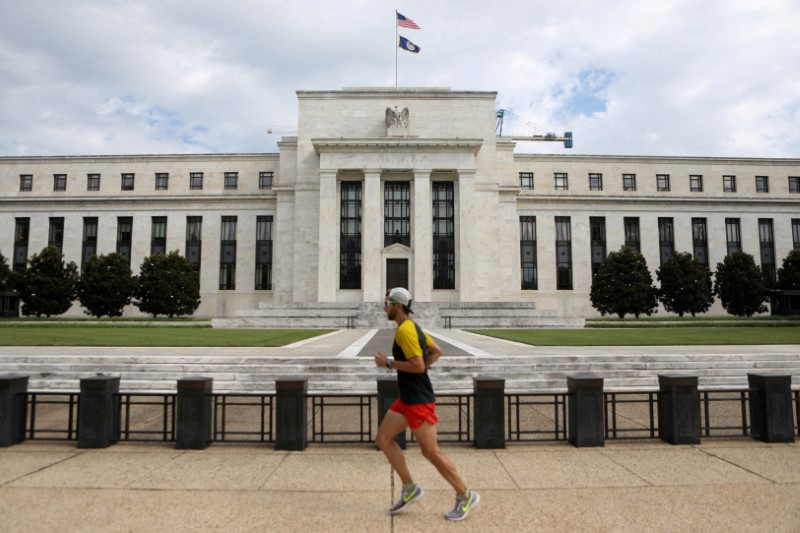
(Reuters) – A look at the day ahead in U.S. and global markets by Amanda Cooper.
What a difference a day makes. Just 24 hours ago, investors were coming to terms with the idea that a half-point rate cut next week from the Federal Reserve was unlikely and a quarter-point drop was much more in line with a soft-landing scenario.
A couple of articles by closely followed Fed correspondents in the Financial Times and the Wall Street Journal overnight, along with comments from influential former Fed official Bill Dudley, have been enough to flip those assumptions on their head. It’s now pretty much 50/50 as to whether the Fed goes 25 basis points or 50 on Sept. 18.
This 180-switch hasn’t puffed up U.S. stock futures or given bitcoin a bid so far, but rather has pushed gold to yet another record high above $2,570 an ounce.
Gold has gained nearly 25% in value this year, fuelled by a heady cocktail of the prospect of lower U.S. interest rates, falling inflation, a weaker dollar and a highly volatile geopolitical backdrop.
Investors are currently sitting on one of their largest bullish positions in gold futures on record. Weekly data from the U.S. markets regulator shows non-commercial investors – a category that can include individual investors, some hedge funds and financial institutions – hold 287,558 gold futures contracts, worth around $73 billion based on the current spot price.
CENTRAL BANKS STILL ADDING GOLD
It hasn’t just been skittish investors adding to their rainy-day bullion holdings either. Central banks around the world, which tend to be in it for long-term, are still adding gold to their reserves at breakneck speed following 2023’s splurge – the second highest for the official sector on record.
Exchange-traded funds have recorded positive inflows for four straight months to the end of August after years of almost unmitigated outflows.
Because gold does not bear any interest of its own, it can compete more effectively for investor cash when U.S. rates are falling. In fact, in five out of the last seven Fed easing cycles going back to 1982, gold has rallied in the six months following the first cut.
The possible dull element in this otherwise glittery picture is the impact of an seemingly unstoppable rally on actual consumers of gold. Retail investors, jewellers and industrial users are highly price sensitive.
But for now, particularly with a juicy half-point cut in the offing from the Fed now believed to be more likely, gold is retaining its shine.
Key developments that should provide more direction to U.S. markets later on Friday:
* August import/export prices
* University of Michigan Sept preliminary consumer sentiment

